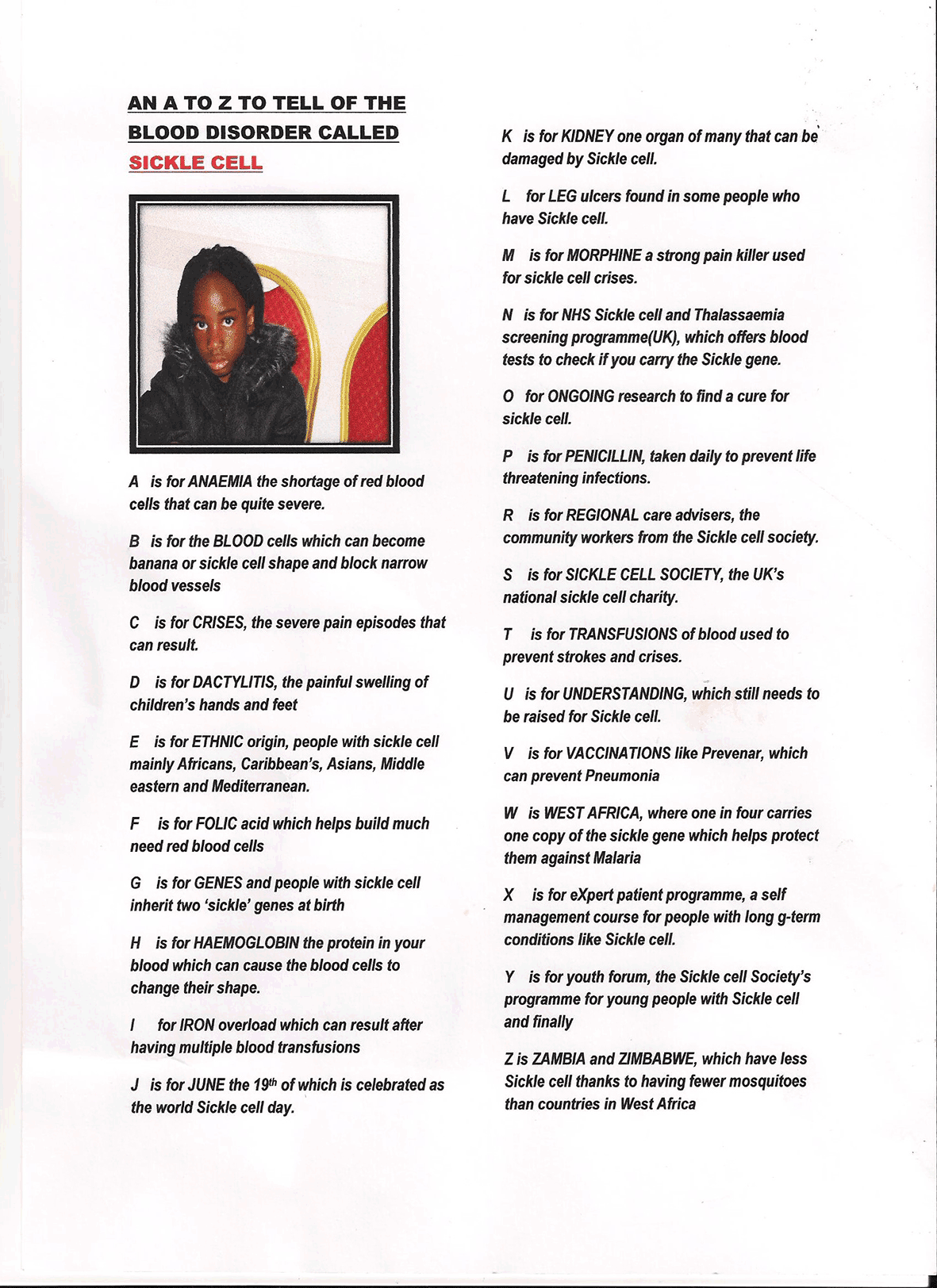About sickle cell

Sickle cell disease is an inherited blood disorder that affects red blood cells.
People with sickle cell disease have red blood cells that contain mostly haemoglobin* S, an abnormal type of haemoglobin. Often these red blood cells become sickle-shaped (crescent shaped) and have difficulty passing through small blood vessels.
When sickle-shaped cells block small blood vessels, less blood can flow in that part of the body. Tissue that does not receive a normal blood flow eventually becomes damaged. This is what causes the complications of sickle cell disease. There is currently no universal cure for sickle cell disease.
Sickle-cell in Uganda
This is a disease that is quite prevalent in the country but unfortunately has been stigmatized. There is a low level of its awareness in the population as the disease is viewed as a defect which should be hidden; there is literally very little help from the medical services. Holly Foundation, working hand in hand with the Sickle-cell Association of Uganda at Mulago Hospital, is currently changing that. Speaking at the Holly Foundation Launch on 13 January 2012 Professor Ndugwa welcomed the many ways Holly Foundation would help the exhausted Sickle-cell Association of Uganda.
Community education is a very important role for sickle-cell disease since early detection together with other intervation could prevent ill health and deaths in the future. Read more in this report: Sickle cell disease in Uganda: a time for action by G.R. Serjeant and C.M.Ndugwa, University of the West Indies
Inheritance
Sickle cell conditions are inherited from parents in much the same way as blood type, hair colour and texture, eye colour and other physical traits. The types of haemoglobin a person makes in the red blood cells depend upon what haemoglobin genes the person inherits from his or her parents. Like most genes, haemoglobin genes are inherited in two sets – one from each parent.
Examples:
If one parent has Sickle Cell Anaemia and the other is Normal, all of the children will have sickle cell trait.
If one parent has Sickle Cell Anaemia and the other has Sickle Cell Trait, there is a 50% chance (or 1 out of 2) of having a baby with either sickle cell disease or sickle cell trait with each pregnancy.
When both parents have Sickle Cell Trait, they have a 25% chance (1 of 4) of having a baby with sickle cell disease with each pregnancy.
What is Sickle Cell Trait?
Sickle Cell trait (AS) is an inherited condition in which both haemoglobin A and S are produced in the red blood cells, always more A than S. Sickle cell trait is not a type of sickle cell disease. People with sickle cell trait are generally healthy.
How will I know if I have the Trait?
A SIMPLE BLOOD TEST followed by a laboratory technique called Haemoglobin Electrophoresis will determine the type of haemoglobin you have. When you pass an electric charge through a solution of haemoglobin, distinct haemoglobins move different distances, depending on their composition. This technique differentiates between normal haemoglobin (A), Sickle haemoglobin (S), and other different kinds of haemoglobin (such as C, D, E, etc.).
Treatment for sickle cell disease
THE GOOD NEWS
According to the University of Maryland Medical Center, bone marrow transplant is currently the only cure for sickle cell anemia. This procedure is not, however, suitable for all patients; suitability depends on age, severity of the disease, and donor availability. While the majority of bone marrow transplants are successful in curing sickle cell anaemia, the procedure does carry some significant risks.
Read more about this at:
http://www.ehow.com/about_5531141_cure-sickle-cell-anemia.html
More good news is that there are treatments and precautions that can help treat the disease, prevent painful sickle cell crises, and relieve pain during these episodes.
Some sickle cell crises can be prevented by avoiding the factors that bring on the crises. This includes avoiding exposure to cold weather, getting plenty of sleep and rest, being careful not to exercise too hard, and drinking plenty of fluids.


